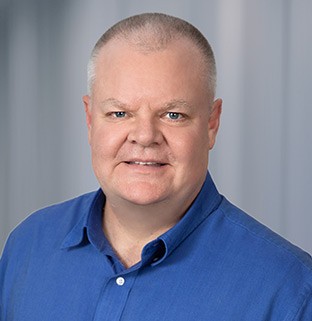- CFOs in a Time of Transformation
- Client Stories
- IQ Insigniam Quarterly® Magazine
- Organizational Culture
Aimmune Is Not Allergic to Change
What is true for children is also true for organizations: Growing older and bigger is not exactly the same as maturing. The latter requires self-reflection, intentional goals and taking responsibility.
When Jayson Dallas, M.D., joined Aimmune as its president and CEO in June 2018, the Brisbane, California-based biopharmaceutical company was at a critical moment in its journey. Dr. Dallas took on the task of pushing the rapidly growing startup, which develops game-changing food allergy treatments, to adopt a more sophisticated governance structure and culture.
What did not need to change was Aimmune’s purpose. It had been founded seven years earlier by a group of patient advocates and parents, with the support of physician researchers who all wanted to change a frustrating health care reality: Instead of being able to treat a food allergy, people had to manage it. With no approved treatments available, allergists could only advise patients to simply avoid foods and carry EpiPens in the case of a life-threatening emergency. Those options were not enough.
“We want to bring as many therapies as we can to the market to treat people with food allergies for whom, in 2019, there still is nothing,” Dr. Dallas says. “We want to establish ourselves as the leader in the treatment of food allergy.”
A Delicate Balance
During Aimmune’s early years, it sometimes felt as if almost every employee sat in on almost every meeting and participated in almost every decision. The company was—and remains—focused on developing its first drug: an oral immunotherapy for peanut allergies. (The drug is under review by the U.S. Food and Drug Administration.) Over the last decade, Aimmune’s workforce has grown steadily to meet the challenges of moving that initial drug through clinical trials while also advancing efforts to develop new treatments for other food allergies. Today the growth continues: The company will employ about 400 people by the end of 2019—more than doubling its staff in the year since Dr. Dallas arrived.
After such a growth spurt, the organizational context had clearly changed: Aimmune could no longer remain a place where every employee was consulted on every decision. Instead, it needed to empower people at each level to make appropriate decisions.
Dr. Dallas knew that getting governance right would not be easy. From his 25 years of experience in the medical and pharmaceutical industries, he anticipated that he would have to strike a delicate balance between two objectives: rendering decision-making efficient while also encouraging employees to be responsible, accountable, consulted and informed—similar to the RACI model.
“These two goals are on polar ends of a spectrum,” Dr. Dallas says. On one side is a dictatorship: One person makes all the decisions. On the other side is complete consensus, where everyone plays a role in all decisions. “What’s weird,” he says, “is that a lot of folks tell you that they want both of those things: efficient decision-making and broad consultation on everything.”
To walk the fine line between the two, Dr. Dallas asked Aimmune’s executive committee to get very specific about its remit—the decisions it absolutely had to make. He and his team determined that, partly due to regulations, Aimmune needed four senior-level committees, each chaired by a member of the executive team: safety, market access, grants and compliance. From there, the company also identified the internal stakeholder who needed to support each committee’s decision-making responsibilities—for instance, the pricing and marketing experts needed to make recommendations.
“We’re evolving a different way. We’re significantly upgrading the role of the crossfunctional team lead and making that the decision-making role.”
—Dr. Jayson Dallas, president and CEO, Aimmune
Just as important, Dr. Dallas wanted everyone to be clear about the decisions that the leadership team did not need to make. For example, some decisions involving marketing or R&D might be made by those departments.
“What Jayson believes and espouses is that leaders need to spend the vast majority of their time looking toward the horizon, thinking strategically rather than getting in the weeds,” says Jon Kleinman, a partner at Insigniam who is lead consultant on the Aimmune account. “And he understands, maybe as well as any executive I’ve ever worked with, that for people who are used to being involved in the minutiae of day-to-day operations, it will require a mindset shift to make that change.”
The trap that Dr. Dallas did not want Aimmune to fall into was letting functions become siloed. He did not want marketing focused only on marketing, or the research team only concerned with drug development. That is the classic structure of most organizations, he says: Decision-making powers sit within each function, while leaders tasked with overseeing cross-functional teams struggle to direct employees over whom they have no direct authority.
“We’re evolving a different way,” Dr. Dallas says. “We’re significantly upgrading the role of the cross-functional team lead and making that the decision-making role.”
Now, for instance, if people at Aimmune want to begin a project to develop the company’s peanut allergy drug for adults (it is currently meant for children), a cross-functional team would make the case. It would create a proposal with the business case, schedule and budget, and present it to the executive team. “The executive committee doesn’t have to get down into all the details, but it weighs the proposal and does a prioritization exercise with options presented by other teams,” Dr. Dallas says. “That has made the organization vastly more efficient—and makes the teams feel more empowered.”
While implementing Aimmune’s new governance structure and distributing accountabilities to specific teams and committees, Dr. Dallas also made clear that “organizational risk is always the accountability of the leadership team.” If anyone makes a decision that could jeopardize the company’s reputation, for instance, an escalation process allows an executive to step in and take over.
Surround-Sound Culture
Aimmune’s recent growth has been about more than just head count. Its workforce is now spread across time zones and continents. While the company had a few key employees in Europe and on the East Coast early on, almost all activities took place at its San Francisco Bay Area headquarters. Today, Aimmune has established offices in North Carolina and England, along with a manufacturing facility in Florida.
When Dr. Dallas took over as CEO, he quickly identified some challenges stemming from rapid growth. Employees who did not work at headquarters felt like outsiders who had to do what they were told. In addition, Aimmune’s newest hires are mostly customer-facing representatives who work on the road. “There’s a lot of remote management and remote leadership that has to happen,” Dr. Dallas says.
Those realities placed increasing pressure on company leaders to rethink and rebuild Aimmune’s culture. “The culture has to evolve,” Dr. Dallas says. “We can either let that happen, or we can drive it and take ownership of some pieces of it.”
“You can have the most amazing strategy and greatest organizational structures in place. But if folks don’t feel they’re being communicated to, it just won’t work.”
—Dr. Jayson Dallas
The challenge was to move toward a united culture regardless of the company’s location. “You can have the most amazing strategy and greatest organizational structures in place. But if folks don’t feel they’re being communicated with, it just won’t work,” Dr. Dallas says. “What will happen is fragmentation of culture.”
But the solution is not as simple as company leaders from all locations simply singing from the same hymnal. When an organization is growing rapidly, Dr. Dallas says, two-way communication should be the top priority. “As long as people know what’s going on and have a clear channel for their questions and answers, things tend to go well.”
To ensure all employees felt included and were engaged, Dr. Dallas pursued what he calls “surround-sound communication.” This meant communicating to Aimmune employees via every possible vehicle: one-on-one meetings, big-group meetings, emails, websites and social media. Regardless of an employee’s preferred channel, everyone would receive every communication. And if they received it more than once via different channels, all the better. “Jayson is the embodiment of the notion that during times of significant change, you need to communicate 10 times more than you might think,” Mr. Kleinman says.
The surround-sound strategy also involved investing in videoconferencing capabilities so that Aimmune could conduct town hall meetings hosted not only by headquarters but at other sites as well. And Dr. Dallas had the company’s other C-suite leaders develop travel plans for visiting each site as well as employees in the field throughout the year.
There was a danger in all this ramped-up communication: being lulled into a false sense of security. Receiving a message is not the same as hearing it, let alone supporting it. “You can go through a change initiative and say, ‘We had a town hall, we told people what we’re doing,’ and then go back to the office and say, ‘Everyone gets it because we told them.’ Inevitably, that’s not true,” Dr. Dallas says.
He knows that this scenario can be especially common at biotech organizations like Aimmune where many employees crave data before making a decision or accepting change. Aimmune’s leadership team could not just announce changes to an organization full of scientists who were looking for details and input. “If you’ve designed change and put it in place, then change is super-energizing,” Dr. Dallas says. “But when you’re not involved in the decision and have no ownership over it, it risks being very demoralizing.”
It was imperative that Aimmune employees had a say about any large changes in the company and bought into them. So last year he established what he calls “pulse groups”: employees across functions who volunteer to discuss what is happening at the organization. As implied by their name, the groups allow the company’s leadership team to take the pulse of employees—to understand where they are accepting change and where they are resisting it.
“It’s a great way to get the whisperings on the ground,” Dr. Dallas says. “If we’ve said something five times and people still don’t get it, we know there’s something wrong with the way we’re saying it.” Share on X
Just this January, he read some feedback from one pulse group indicating that something promising had taken root. The group had discussed a photo of an employee wearing an Aimmune jacket while standing atop a mountain in Wales, in the U.K. Its members had an idea: a social media campaign centered around the question, “Where in the world has my Aimmune jacket been?”
“When folks are not debating fundamental changes at the organization, but instead are figuring out how to have fun at work, that’s a good place to be,” Dr. Dallas says.
This article appeared in the Spring 2019 issue of Insigniam Quarterly, with the headline “Not Allergic to Change.” To begin receiving IQ, go here.




